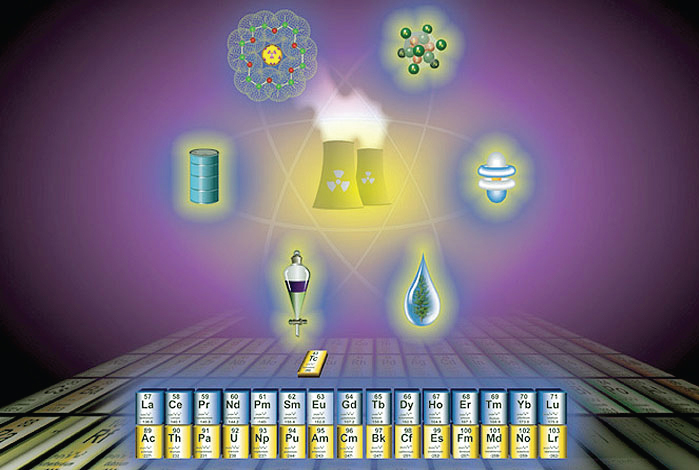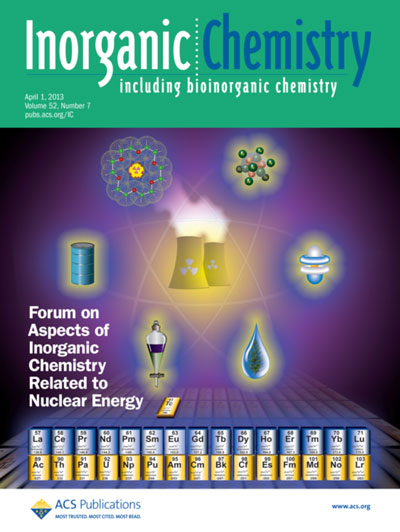Paper captures the cover of applied spectroscopy

Paper captures the cover of applied spectroscopy
The journal Inorganic Chemistry recently published a special Forum issue on the role of inorganic chemistry in nuclear energy
The issue, which appeared April 1st, 2013 was guest edited by Chemistry Division’s John Gordon and contained invited contributions from Los Alamos scientists. In total, the Forum section of the issue contained 13 contributed articles dedicated to this important topic. John, a member of the journal’s editorial advisory board was invited to participate in this capacity as a result of the seminal role that Los Alamos National Laboratory has played over the years in the field of inorganic actinide chemistry.
Gordon’s framing of the issue in the introduction of this thematic issue tackles the acknowledged fact that energy is one of the premier challenges facing humanity in the 21st century and beyond. The extent of the role that nuclear energy will play in that future remains to be seen, but it will undoubtedly be an important part of the energy mix. Inorganic chemistry, and inorganic chemists are critical to shaping energy research and development and in providing solutions to these grand challenges.
Specifically, the efficacy of nuclear power production rests on the ability to effect a so-called nuclear fuel cycle safely, efficiently, and economically. "Fuel cycle" is the terminology used to describe how the nuclear fuel itself progresses through the various different stages involved in generating electricity. A particular type of fuel cycle thus comprises steps in the so-called "front end," which represent the preparation of the fuel (e.g. mining and fuel enrichment), the "service period" during which time the fuel material is used in reactor operation for electricity production, and the "back-end" steps, which are aimed toward the safe handling and subsequent reprocessing or disposition of spent nuclear fuel materials. The articles in the issue discuss inorganic chemistry as it relates to different aspects of the fuel cycle.
This work supports the Laboratory’s energy security mission.
Los Alamos Related Contributions:
"Preface: Forum on Aspects of Inorganic Chemistry Related to Nuclear Energy." John C. Gordon, (LANL) Kenneth Czerwinski, (UNLV), and Lynn Francesconi (Hunter College of CUNY).
"Chemical Speciation of Neptunium(VI) under Strongly Alkaline Conditions. Structure, Composition, and Oxo Ligand Exchange". David L. Clark, Steven D. Conradson, Robert J. Donohoe, Pamela L. Gordon, D. Webster Keogh, Phillip D. Palmer, Brian L. Scott, and C. Drew Tait. pp 3547–3555. DOI: 10.1021/ic3020139
"Technetium Chemistry in the Fuel Cycle: Combining Basic and Applied Studies".
Frederic Poineau, Edward Mausolf, Gordon D. Jarvinen, Alfred P. Sattelberger, and Kenneth R. Czerwinski pp 3573–3578. DOI: 10.1021/ic3016468
Reference: Inorganic Chemistry, April 1, 2013. Volume 52, Issue 7 Pages 3405-4120. http://pubs.acs.org/toc/inocaj/52/7

The cover highlights some topics featured in this Forum on Aspects of Inorganic Chemistry Related to Nuclear Energy. Articles highlight fundamental as well as application-driven efforts of researchers working in the field. Cover art by Josh Smith, Los Alamos National Laboratory.





